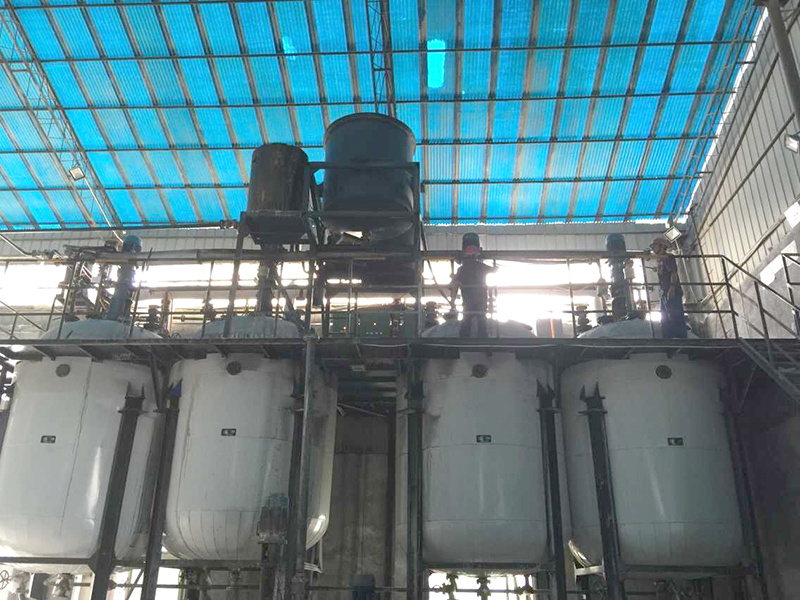Exploring Tripolyphosphate Exports: Trends and Insights for 2023
2025-06-24

Exploring Tripolyphosphate Exports: Trends and Insights for 2023
Table of Contents
- 1. Introduction to Tripolyphosphate Exports
- 2. What is Tripolyphosphate?
- 3. Global Market Trends for Tripolyphosphate in 2023
- 4. Key Exporting Countries of Tripolyphosphate
- 5. Demand Analysis: Industries Driving Tripolyphosphate Exports
- 6. The Production Process of Tripolyphosphate
- 7. Regulatory Environment Impacting Tripolyphosphate Exports
- 8. Sustainability Initiatives in Tripolyphosphate Production
- 9. Future Outlook for Tripolyphosphate Exports
- 10. Frequently Asked Questions (FAQs)
- 11. Conclusion
1. Introduction to Tripolyphosphate Exports
The global biochemical industry has witnessed significant transformations, especially in the field of tripolyphosphate. As a crucial component in various applications, including detergents and fertilizers, understanding the trends and insights surrounding tripolyphosphate exports in 2023 is essential for industry stakeholders. This article examines the current market dynamics, production methods, and future outlook for tripolyphosphate, offering a comprehensive overview of how this chemical compound is shaping the global market landscape.
2. What is Tripolyphosphate?
Tripolyphosphate, or tripolyphosphoric acid, is a chemical compound characterized by its formula Na5P3O10. Known for its versatility, tripolyphosphate finds extensive applications across numerous industries, including agriculture, food processing, and personal care products. Its primary use in agriculture as a fertilizer enhances nutrient absorption in plants, thus playing a significant role in improving crop yields.
3. Global Market Trends for Tripolyphosphate in 2023
The tripolyphosphate market is set to experience notable growth in 2023, driven by increasing demand from the agricultural sector. According to recent market reports, the global tripolyphosphate market is projected to expand at a compound annual growth rate (CAGR) of over 5% during the forecast period. Factors contributing to this growth include:
- Rising agricultural production: The need for enhanced crop yields to meet the growing food demand.
- Advancements in fertilizer technology: Innovations aimed at improving soil health and nutrient delivery systems.
- Expanding detergent and cleaning markets: Increased use of tripolyphosphate in various cleaning agents and household products.
4. Key Exporting Countries of Tripolyphosphate
Identifying the key players in the tripolyphosphate export market is crucial for understanding global supply chains. Major exporting countries include:
- China: The largest producer and exporter, benefiting from advanced production technologies and a robust manufacturing base.
- United States: A significant player with a well-established agricultural sector that utilizes tripolyphosphate extensively.
- European Union: Various member countries, particularly Germany and France, contribute to the export market.
These countries collectively account for a substantial portion of the global tripolyphosphate exports, underlining their importance in the international market.
5. Demand Analysis: Industries Driving Tripolyphosphate Exports
The demand for tripolyphosphate is primarily driven by several industries:
- Agriculture: The predominant sector utilizing tripolyphosphate as a fertilizer to enhance crop productivity.
- Food Processing: Used as a food additive, tripolyphosphate aids in maintaining the quality and texture of processed foods.
- Detergents and Cleaning Products: Its use in formulation helps improve the cleaning efficiency of various household products.
6. The Production Process of Tripolyphosphate
The manufacturing of tripolyphosphate typically involves the reaction of phosphoric acid with sodium carbonate or sodium hydroxide. The process can be summarized as follows:
- Raw Material Preparation: Sourcing high-purity phosphoric acid and sodium sources.
- Chemical Reaction: Mixing phosphoric acid with sodium carbonate under controlled conditions.
- Crystallization: Cooling and crystallizing the resultant tripolyphosphate.
- Drying and Packaging: Post-production, the tripolyphosphate is dried and packaged for distribution.
Advancements in production technology focus on improving yield, reducing waste, and enhancing the overall efficiency of the manufacturing process.
7. Regulatory Environment Impacting Tripolyphosphate Exports
The production and export of tripolyphosphate are subject to various regulations aimed at ensuring safety and environmental compliance. Key regulatory aspects include:
- Environmental Regulations: Compliance with laws governing the environmental impact of chemical manufacturing.
- Trade Regulations: Understanding tariffs, export restrictions, and trade agreements that affect international transactions.
- Quality Standards: Adhering to international quality standards for chemical products to ensure consumer safety.
8. Sustainability Initiatives in Tripolyphosphate Production
As environmental concerns rise, the tripolyphosphate industry is increasingly adopting sustainable practices. Key initiatives include:
- Waste Reduction: Implementing processes to minimize waste during production.
- Resource Optimization: Utilizing renewable resources and improving energy efficiency in manufacturing.
- Recycling: Promoting the recycling of tripolyphosphate-containing products to reduce environmental impact.
9. Future Outlook for Tripolyphosphate Exports
Looking ahead, the tripolyphosphate market is expected to undergo transformative changes driven by technological advancements and shifting consumer preferences. Key projections for the future include:
- Increased Demand from Emerging Markets: Countries in Asia and Africa are projected to increase their consumption of tripolyphosphate, driven by agricultural needs.
- Technological Innovations: Continued investments in R&D will lead to more efficient production processes and product formulations.
- Growing Focus on Sustainability: The industry will likely see a shift towards more environmentally friendly practices and products.
10. Frequently Asked Questions (FAQs)
What is the primary use of tripolyphosphate?
Tripolyphosphate is primarily used as a fertilizer in agriculture to enhance nutrient absorption in plants.
Which countries are the largest exporters of tripolyphosphate?
China, the United States, and certain European Union countries are among the largest exporters of tripolyphosphate.
How is tripolyphosphate produced?
Tripolyphosphate is produced through the reaction of phosphoric acid with sodium carbonate or sodium hydroxide, followed by crystallization.
What are the environmental concerns associated with tripolyphosphate production?
Environmental concerns include the potential for pollution from chemical manufacturing processes and the need for compliance with environmental regulations.
How is the demand for tripolyphosphate expected to change in the coming years?
The demand for tripolyphosphate is expected to increase, particularly from emerging markets and driven by the need for improved agricultural productivity.
11. Conclusion
In 2023, tripolyphosphate exports are poised for growth, influenced by agricultural demands and advancements in production technologies. Understanding the market trends, key players, and future projections is crucial for stakeholders in the biochemical industry. By focusing on sustainability and regulatory compliance, the tripolyphosphate market can evolve responsibly, meeting both consumer needs and environmental standards. As we move forward, staying informed and adaptable will be essential for navigating the complexities of the tripolyphosphate export landscape.


 TESFA STPP
TESFA STPP